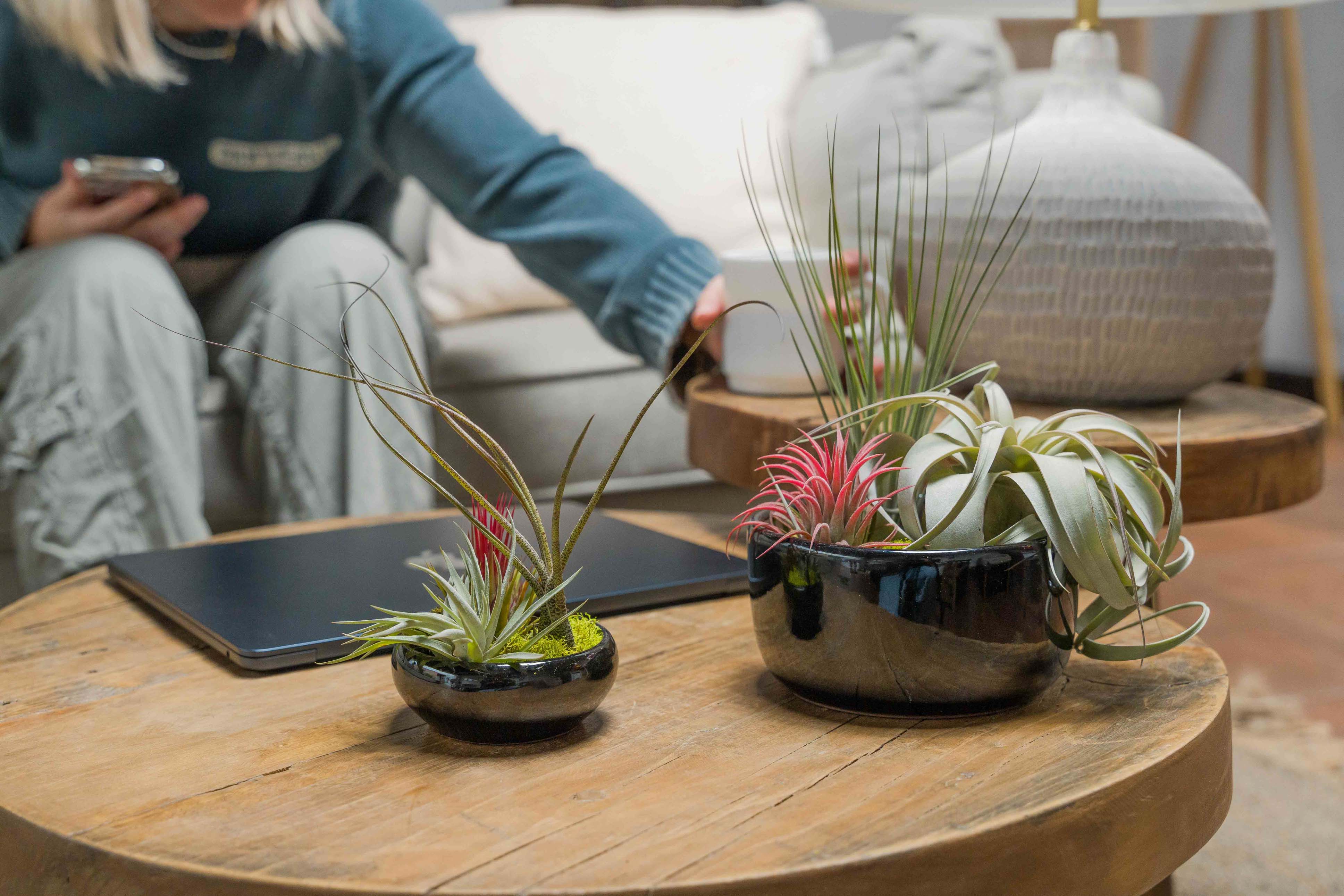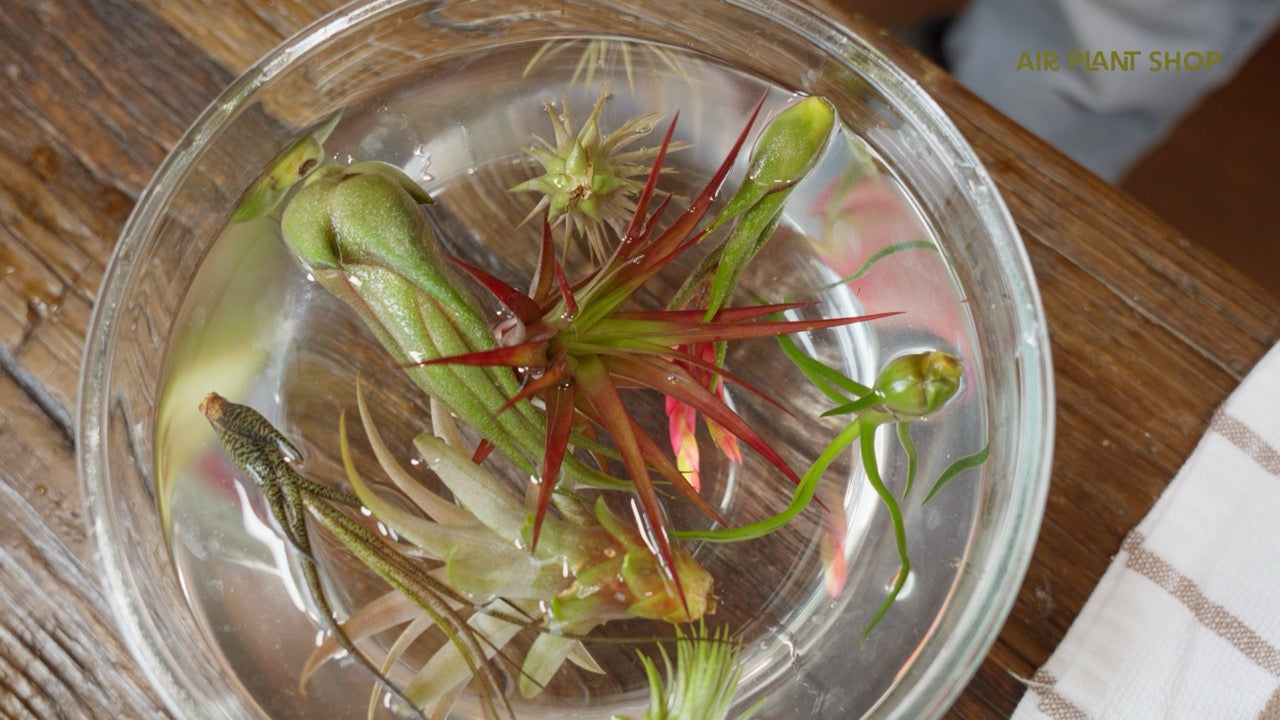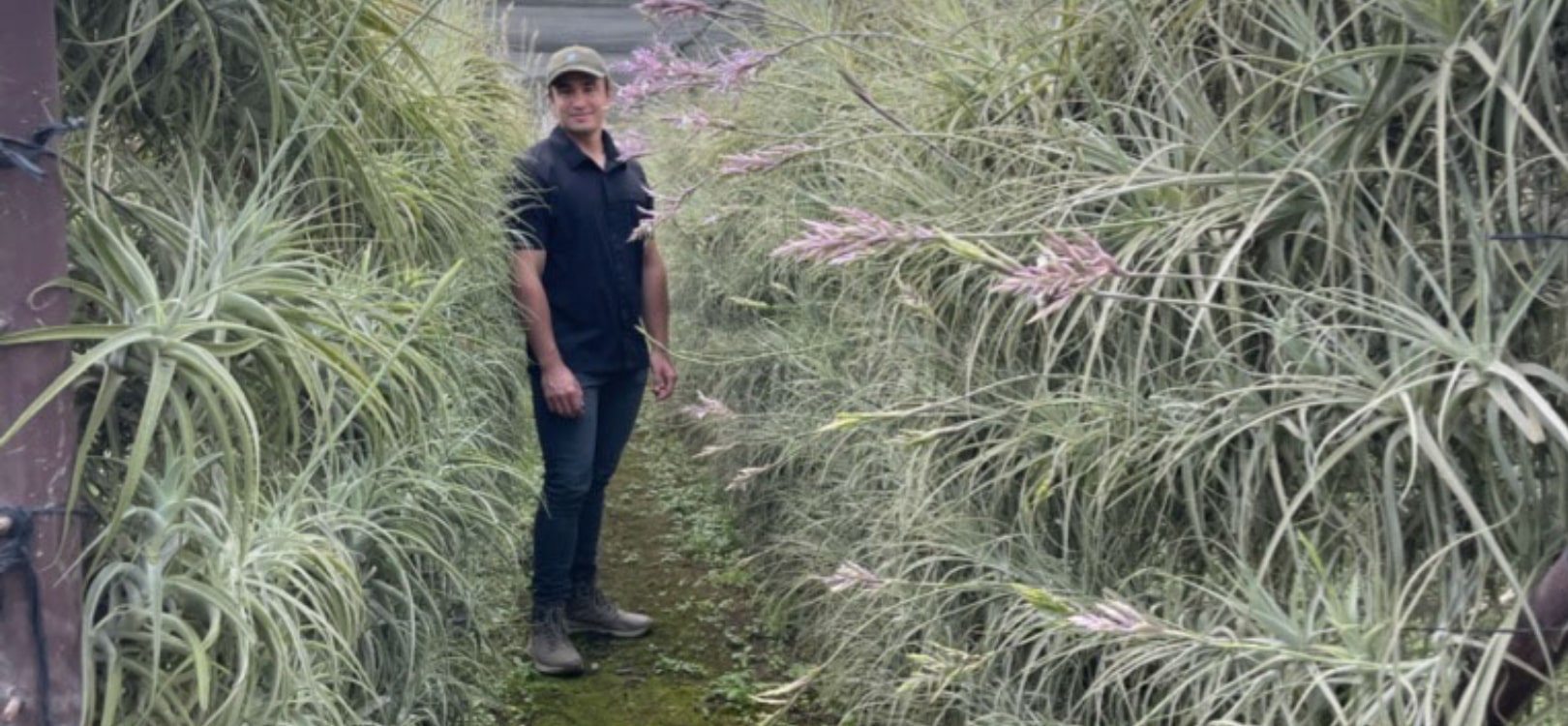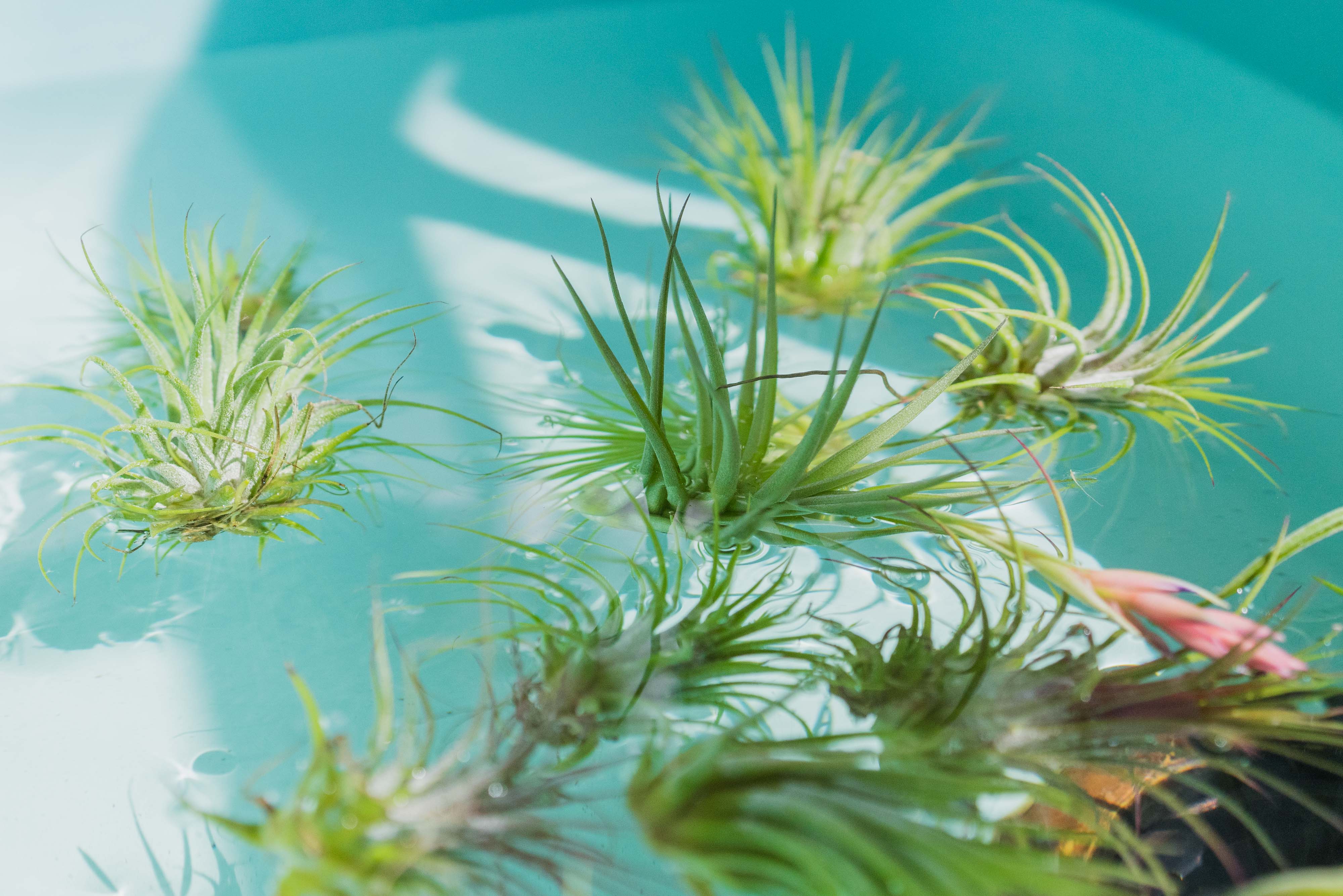Here at the Air Plant Supply Co., we've found that air plants thrive best with a good soak in water. It's important to remember that air plants absorb all their nutrients through their leaves, not their roots. The roots are just there to anchor the plant to a tree, rock, or even the ground. Soak your air plants in a bowl, sink or tub of water, depending on the size of your collection, for 20 to 30 minutes once a week. Make sure to submerge the entire plant in room temperature water to avoid shocking it. If your plant has a bloom, consider keeping the bud above the water to avoid disturbing it, although in nature, they do get wet regularly.
Want to learn more about blooming air plants? Check out our blog: What Happens After Blooming?

Since air plants get many of their nutrients from water, it's best to use water rich in minerals and nutrients. Rainwater is ideal, but if you can't capture rainwater, spring water is a great alternative. Creek, lake, or well water can also work. Avoid using distilled or filtered water, as they lack essential minerals. Tap water often contains chemicals and fewer nutrients, and its pH is usually higher than the preferred slightly acidic range of 5.5 to 6.0. However, don't stress too much about pH levels— clean, mineral-rich water will do just fine. Our rule of thumb is if you can drink it, so can your plants!
The second most important part of watering your air plants is properly drying them afterward. Lay your air plants on a dish towel or drying rack on their side or upside down to dry completely. This is especially crucial for larger, Xeric species like Xerographica, Streptophylla, and Sparkler. They should feel fully dry within a couple hours after their soak. Do not return your air plants to terrariums or on display until they're completely dry. Placing wet plants inside an enclosure can lead to rot.
We highly recommend adjusting and customizing your care routine based on your plants' new environment and specific variety. If one plant seems sufficiently hydrated, maybe skip a week of watering. If all of the plants seem to dry up halfway into the week, maybe try a mid-week misting.

Learn how to spot a dehydrated air plant in our blog: Air Plant Watering Hydrated vs Dehydrated Plants.
By following these simple watering and drying tips, you can ensure your air plants stay vibrant and healthy. A little care goes a long way in helping these unique plants thrive. Happy growing from all of us at the Air Plant Supply Co.!
Looking to learn more about Tillandsia care? Check out these blogs!
How to Keep Your Air Plants Healthy










Every Friday, I throw my eight air plants into a pail, siphon three gallons of water from my thirty-eight-gallon aquarium onto them, soak them for a half hour, and dry them upside down overnight on paper towel. Their permanent home is atop the black stones in my water-filled fourteen-inch saucer that has three rare and unusual houseplants growing in clay pots. They all get most of their light from an Ott-Lite bulb.
For everyone wondering about what water to use, I personally use aquarium water and it seems to be doing good!
My Tillandsia is in a wood ornament with a little painted bird perched Olin it, in short, I can’t let the root soak on a paper towel since it’s already in something permanent. So how do I dry it after soaking it?
So.. I do not have access to spring, well, or the ability to collect rain water.. what would be my next best option? I currently use filtered water with air plant fertilizer mixed in but I have so many plants I would love the ability to soak them more often as i have had several die on me in the past 6 months :(
I have fertilizer packs but no access to consistent rainwater/natural sources. What’s my best alternative? Could i soak some filtered water in plant clippings or something?
Leave a comment